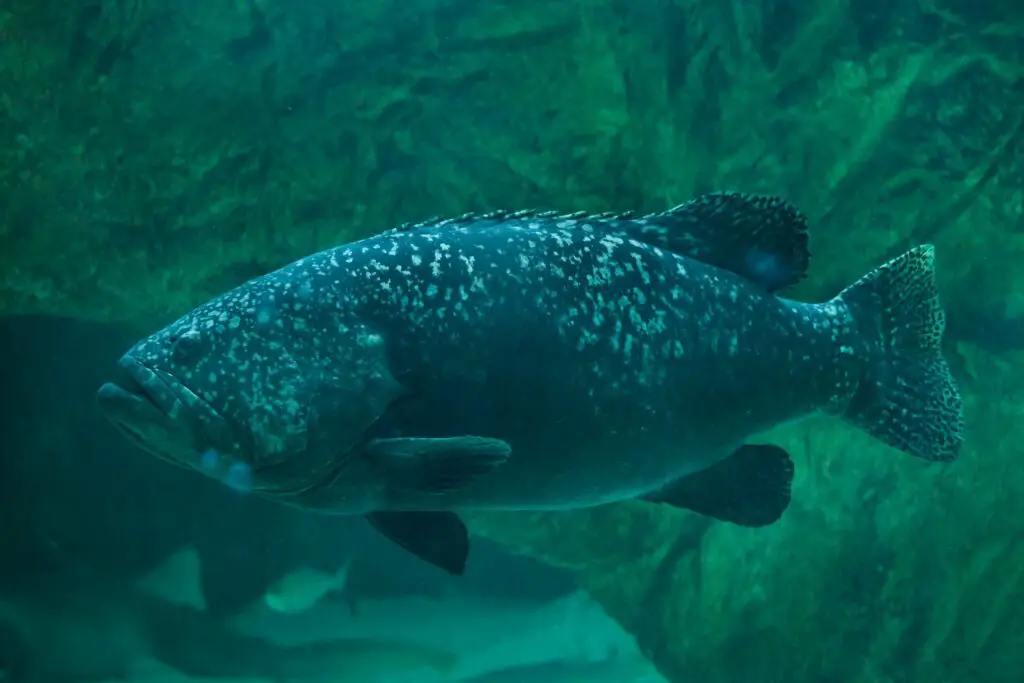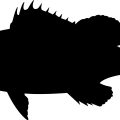Bumblebee grouper, also known as the Queensland grouper, brindle grouper, or mottled-brown sea bass, is a species of marine ray-finned fish in the family Serranidae, which also contains anthias and sea basses. It’s one of the largest bony fish in the Indo-Pacific. The Bumblebee Grouper is one of the sea’s most intriguing and unusual species. Named for their massive size (up to 8 feet in length and 600 pounds), these fish have earned their moniker. Groupers can be found in freshwater and saltwater environments.
However, they are still a popular fish to catch because they are such a large and beautiful creature. The Bumblebee Grouper is a rare grouper fish in the Indo-Pacific region. It is a large, grouper-like fish with a slender body and elongated snout. It can grow to 8 feet long and live up to 50-60 years. The Bumblebee Grouper is primarily olive green, yellow with brown spots, and has a black line running down its back.
The gigantic grouper has a strong body with a length of 2.4 to 3.4 times its depth. The head and intraorbital area are convex, and the preopercle has a rounded corner and serrated edge. The gill cover has a convex upper border. The dorsal fin has 11 spines and 14-16 soft rays, whereas the anal fin has 3 and 8. The caudal fin is somewhat rounded.

Bumblebee Grouper Habitat and Range
The Bumblebee grouper, the “world’s largest grouper,” is the largest and most extensively distributed grouper species. Its native range encompasses the Indo-Pacific region, from the Red Sea to South Africa and from Hawaii to Micronesia in the east. Only occasionally seen north of the Maldives. Southern Japan and Australia are common locations for Bumblebee groupers in the western Pacific. The Persian Gulf has never seen it. The Bumblebee grouper can be found in warm and calm coastal waters, but it prefers the former.
Although the Bumblebee grouper is often found in and near coral reefs and lagoons, it has also been spotted on rocky bottoms, mudflats, seagrass beds, and in open pelagic and epipelagic environments. Large Bumblebee groupers, unlike most other large fish species, have been found close to shore and in harbors, and even larger specimens (>100 cm / 3.3 feet) have been taken in these shallow coastal settings. Many of these fish are so hardy that they’ll swim in salt water. Significant individuals of this species tend to make one cave or shipwreck their “home,” essentially living there full time.
While the Bumblebee grouper has been spotted as deep as 100 meters (330 feet), but it is often seen in shallower waters.
Bumblebee Living in Freshwater
Bumblebee Grouper is a fish found in freshwater lakes, rivers, and streams. This fish can reach a length of up to 30 inches and weighs around 30 pounds. They are seen in fresh, brackish, or marine water environments worldwide. However, they cannot sustain in fresh water for a long period. Eventually, Bumblebee grouper returns to their saltwater habitat.
Bumblebee Grouper Reproduction
Bumblebee Grouper reproduction is an exciting topic. They are polygamous, and mating happens during the night. The female deposits her eggs in a nest she constructs from seaweed, coral, and other materials. The eggs hatch, and the young fish overgrow. They eventually leave the nest and become adults.
The bumblebee grouper reproduces primarily through spawning during the winter months. They deposit eggs into sandbanks or coral reefs, fertilized by male grouper, after about a month, the larva hatch. The eggs hatch within ten days and the young fry consumes large quantities of plankton before emerging as adults in about 60 days. Juvenile Bumblebee can live in freshwater to stay out of trouble but eventually, return to the ocean.
The Status of Conservation of Bumblebee Grouper
Bumblebee Grouper is a species found only off the coast of the Indo-pacific region. They were once abundant in the Caribbean, but their numbers have plummeted due to fishing, pollution, and over-exploitation of their luxury coral products. The International Union for Conservation of Nature has designated the “epinephelus lanceolatus” as a “Vulnerable” species.
More research is needed to determine the size of the global Bumblebee grouper population. However, it’s logical to believe that even in unexploited ocean regions, the population of such a massive predatory fish is small because it needs a large area to sustain itself. We know this species is at risk because its minimum population doubling period is over 14 years. Sexual development in the Bumblebee grouper does not occur until the fish reaches a length of 105–130 cm (3.4–4.3 feet).
The Appearance of Bumblebee Grouper
Bumblebee grouper are among the largest bony fishes that you can find in and near coral reefs. Scientists measured the Bumblebee grouper at a maximum length of 270 cm (8.86 feet). As far as we know, the heaviest specimens of this species ever recorded weighed 400 kilograms. The size of Bumblebee groupers may increase, according to rumors. For instance, the author, inventor, and keen scuba diver Arthur C. Clarke once saw a grouper roughly 20 feet (nearly 6 meters) long in a submerged floating dock off the coast of Sri Lanka.
Large jaws and a rounded tail are distinguishing features of the Bumblebee grouper. As it grows up, the fish will change colors. Juveniles have sporadic yellow spots on a primarily dark background. As it ages, the fish’s body will gradually shift from yellow to a greenish-grey or greyish brown with mild mottling. The Bumblebee Grouper is an exciting fish species because of its unique coloration and size. Its yellow body with black stripes makes it stand out from other species of fish and makes it easy to identify when you are looking for it.
Characteristics and Habits
Bumblebee grouper is a type of fish found in coral reefs and near the surface. They are reef-dwellers and feed on small invertebrates. Bumblebee groupers are active during the day and prefer deep water habitats.










